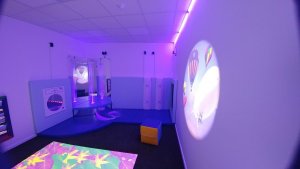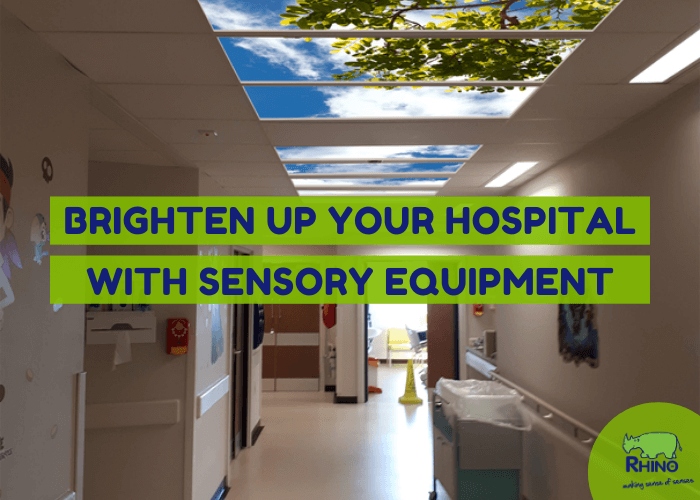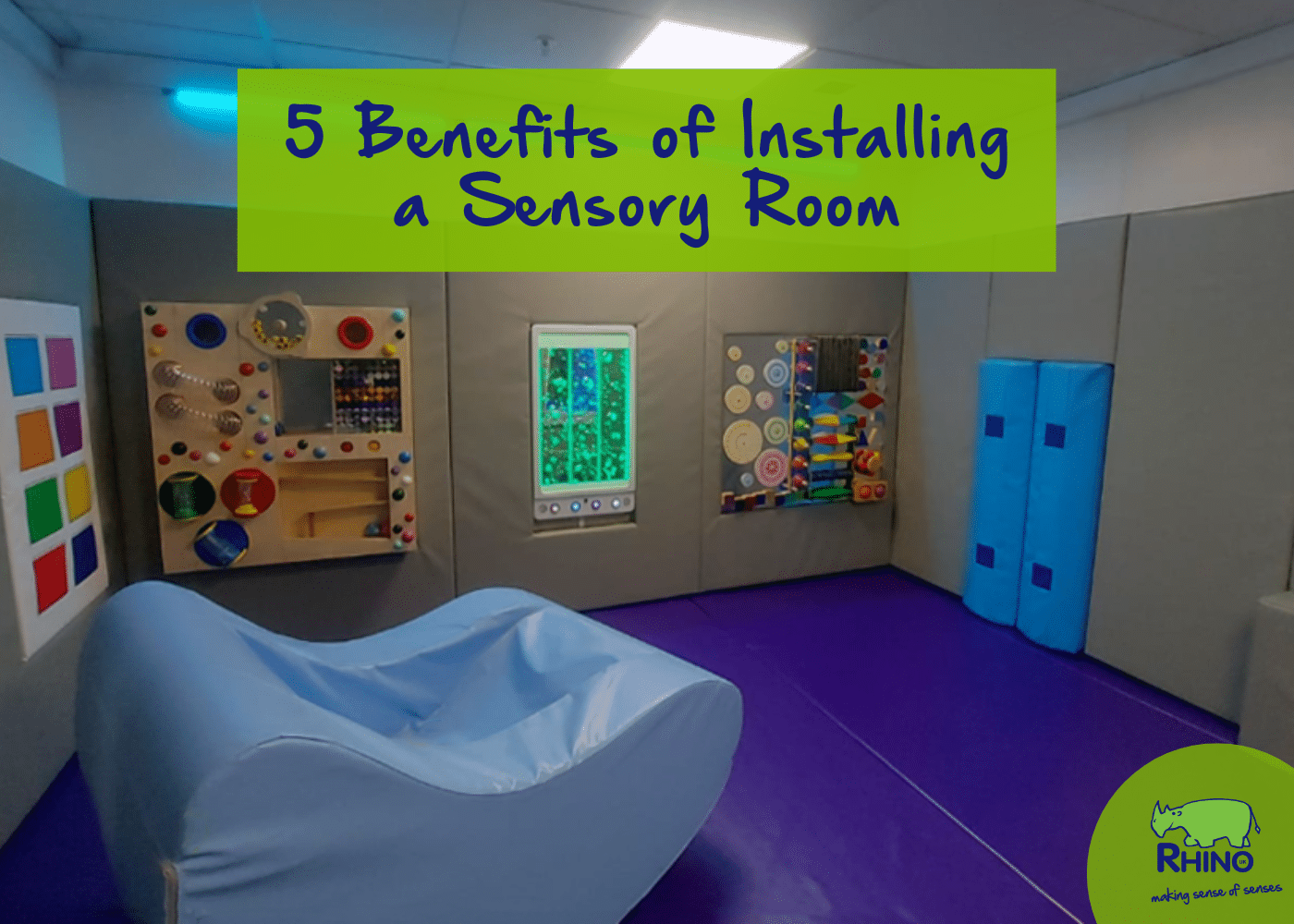Hospitals can feel bleak, clinical, and slightly overwhelming for any young patient who finds themselves in A&E or living on a ward. Luckily, you can do lots of things to make your Hospital experience warmer, friendlier, and most importantly, less scary with the introduction of sensory elements.
Sensory elements and resources can make a distinctively positive impact on your patients, staff and visitors, making your Hospital a more pleasurable place to be.
When we talk about sensory equipment, some people believe that you need a complete shining, bubbling, out of this world Multi-Sensory Room, but that’s not necessarily true. You can create a sensory environment in the corner of a room, in a waiting room, across the walls in a long corridor, or anywhere you’d like with budget-friendly portable sensory equipment, which can be used across multiple rooms and hospital departments.
Rhino Sensory UK work with hospitals across the UK to create these special sensory environments, transforming and uplifting patient experiences. Carry on reading this blog to find inspiration for your own hospital-based sensory project!
Sensory for Hospital Waiting Rooms
Sitting in a hospital waiting room can be a very daunting experience, whether you are the patient or a loved one of a patient with hundreds of thoughts racing through your mind of what may happen next. This is where sensory equipment can play such an important part to help calm nerves and distract patients from the treatment they may be facing.
Sensory Corner
You can create a sensory corner within a waiting room where users can go and sit and interact with the sensory equipment. Such items that may be included in this corner are:
- A bubble or hurricane column sat within a padded podium.
- Bead Tables for children to sit and have fun making patterns.
- Bubble Playtouch LED is an attractive digital interactive game mounted to the wall and homes a selection of educational games.
- The Omi Vista Fixed is an interactive projection system installed into a ceiling to project down onto any floor or surface, providing hundreds of games, quizzes, and educational apps for the user to interact with. What’s best is that there is nothing to clean, and all components are out of reach.
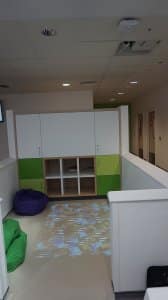
The most important thing to remember when creating a Waiting Room Sensory Corner is to make sure all of the sensory items are fixed, infection control friendly (as a lot of germy fingers will be in contact with the sensory items), and hard-wearing for the high use they will have.
Sensory Ceilings
Having a Sensory ceiling like our LED Sky Ceiling is a fantastic way to brighten up a clinical reception/waiting area 0r a treatment room within a hospital to cheer up staff, patients and visitors. The bright, colourful tiles can bring the outdoors indoors, uplift moods, and encourage relaxation before healthcare or treatment procedures.
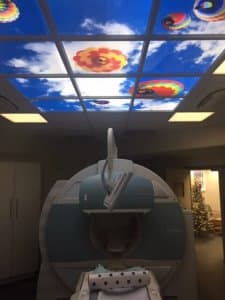
Sensory on the walls of Hospital Corridors
Putting sensory equipment on the walls of corridors is another great way to utilise space and create a friendlier environment. Interactive wall panels are a perfect sensory solution for this. They can provide hours of educational fun with different activities and sensory stimulation to help to calm and aid distraction.
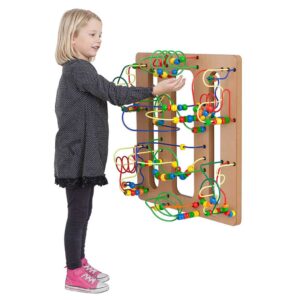
Sensory for Treatment Rooms
Being awake throughout a medical procedure can be very scary for a patient, so trying to make the room as comfortable as possible is very important. Incorporating sensory into the mix can help distract the patient from what is happening to them and help them keep their pain under control.
Sensory items that could be used with a treatment room:
- Projection onto a wall – distract the patient while they watch the projection wheel move around, displaying different colours and themes
- Fibre Optic Tails can be draped over the patient for them to play with and get distracted by the changing sparkly colours
- Fibre Optic Ceiling to gaze into the stars and take the patient into another world
- Fidgets and Sensory Therapy Balls for the patient to grasp onto and fiddle with to take their discomfort out on and distracting them
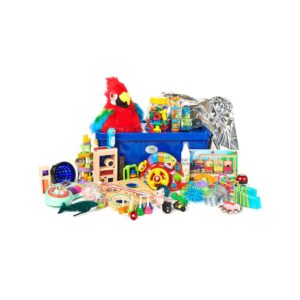
Always remember that all sensory equipment needs to be infection control friendly.
Sensory for Wards
It is challenging and expensive to have sensory equipment on every ward of a hospital, so we’d recommend using portable sensory equipment that can be wheeled between wards.
Rhino UK’s Sensory Voyager is perfect for this as it is a sensory experience on wheels. It has a bubble/hurricane tube, fibre optics, a sensory projector and much more. It can be switched on by simply plugging it into a single plug socket and easily folds away for wheeling down corridors and through doorways to other locations.
The Sensory Voyager can turn a clinical ward into a magical sensory experience at the click of a switch, uplifting the patients’ overall mood and state of mind.
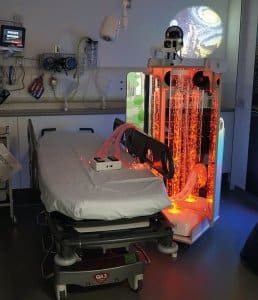
Multi-Sensory Rooms
Some hospitals are fortunate enough to be able to have a full sensory room within their establishment.
Sensory Rooms can be adapted to suit specific needs and age groups. Rhino Sensory UK design and install sensory therapy rooms that encourage and help patients through their treatment journey; sensory stimulation spaces for development and rehabilitation; and calm rooms for relaxation and social interaction.
It very much depends on the purpose of the sensory room to know what sensory equipment is best suited for that room. Rhino UK can advise on this, as we deliver bespoke designs and installations of sensory rooms and environments.
All Sensory Rooms and Sensory Equipment is designed with infection control at the forefront of our minds when supplying to hospitals.
As you can see, there is such a wide variety of sensory ideas that can be implemented into a hospital space, giving sensory solutions for all types of budgets and sensory needs.
If you feel you would like to find out more, please contact our Rhino team, as we are always happy to help!
Or you can explore our dedicated Sensory in Hospitals page.
